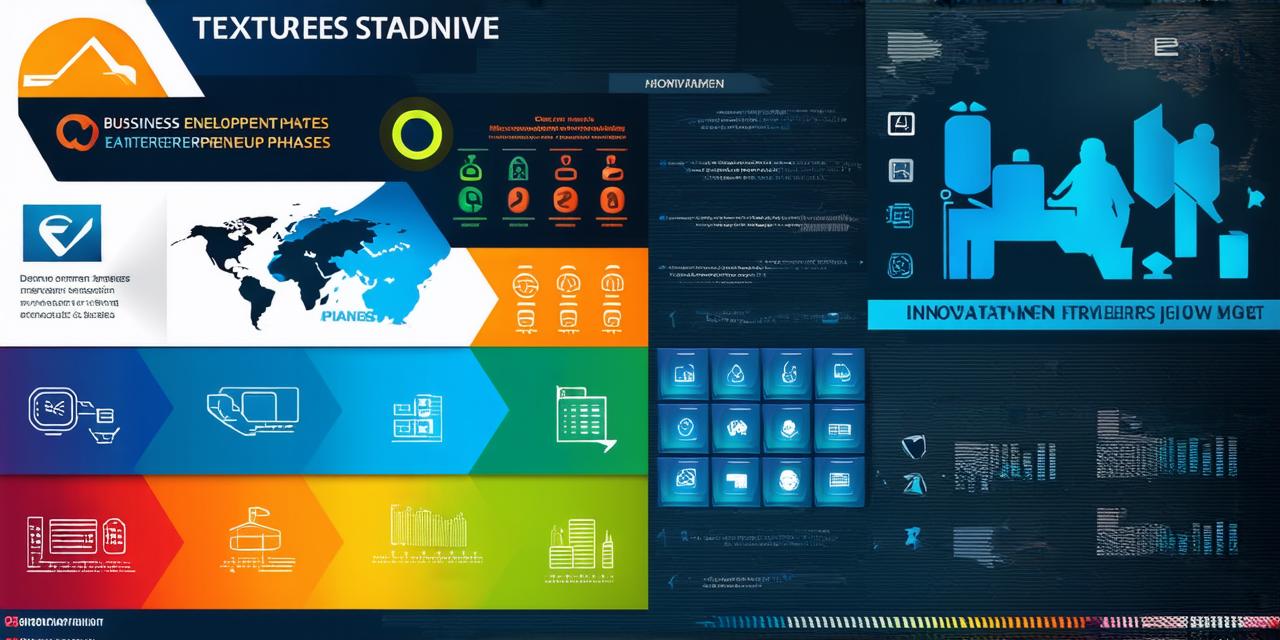1. Ideation and Planning
The first stage of business development is ideation and planning. This involves identifying a problem or need in the market and developing a plan to address it. During this stage, businesses need to conduct research, gather data, and analyze their competition to determine the best way to approach the problem. They also need to develop a clear understanding of their target audience and create a compelling value proposition that will resonate with them.
One example of ideation and planning in action is Airbnb. When the company was founded in 2008, its founders identified a growing demand for affordable and authentic travel experiences. They developed a platform that allowed people to rent out their homes or apartments to travelers, creating a unique and profitable business model.
Another example of ideation and planning is Amazon. When the company was founded in 1994, its founders identified a growing demand for online shopping. They developed a platform that allowed people to buy and sell products online, creating a unique and profitable business model. Today, Amazon is one of the most valuable companies in the world.
2. Execution and Implementation
Once businesses have a clear plan in place, they need to execute it effectively. This involves bringing their idea to life and launching their product or service. During this stage, businesses need to focus on building a strong brand, developing a loyal customer base, and generating revenue.

One example of successful execution and implementation is Uber. When the company was founded in 2010, its founders identified a gap in the market for affordable and convenient transportation options. They developed an app that allowed people to request rides from drivers in their area, creating a unique and profitable business model. Today, Uber is one of the most valuable startups in the world.
Another example of successful execution and implementation is Salesforce. When the company was founded in 1993, its founders identified a growing demand for cloud-based software solutions. They developed a platform that allowed businesses to manage their customer relationships and sales processes online, creating a unique and profitable business model. Today, Salesforce is one of the most valuable companies in the world.
3. Growth and Expansion
Once businesses have successfully launched their product or service, they need to focus on growth and expansion. This involves scaling their operations, entering new markets, and expanding their product or service offerings. During this stage, businesses need to continue investing in research and development, as well as marketing and advertising, to ensure that they are reaching new customers and staying ahead of the competition.
One example of successful growth and expansion is Tesla. When the company was founded in 2003, its founders identified a growing demand for sustainable transportation options. They developed an electric car that not only had impressive performance but also looked sleek and modern. Today, Tesla is one of the most valuable companies in the world and has expanded into new markets, including energy storage and solar power.
Another example of successful growth and expansion is Netflix. When the company was founded in 1997, its founders identified a growing demand for online streaming services. They developed a platform that allowed people to rent and watch movies and TV shows online, creating a unique and profitable business model. Today, Netflix is one of the most valuable companies in the world and has expanded into new markets, including original content production.
4. Maturity and Consolidation
The final stage of business development is maturity and consolidation. This involves stabilizing operations and focusing on generating sustainable profits. During this stage, businesses need to continue investing in innovation and improvement, as well as diversifying their revenue streams, to ensure long-term success.
One example of successful maturity and consolidation is IBM. When the company was founded in 1911, it was primarily focused on the manufacturing of punched-card machines. Over time, IBM expanded into new markets, including computing and software development, and became one of the largest and most profitable companies in the world. Today, IBM continues to invest in innovation and improvement, as well as diversifying its revenue streams, to ensure long-term success.
Another example of successful maturity and consolidation is Microsoft. When the company was founded in 1975, it was primarily focused on developing software for personal computers. Over time, Microsoft expanded into new markets, including gaming and cloud computing, and became one of the largest and most profitable companies in the world. Today, Microsoft continues to invest in innovation and improvement, as well as diversifying its revenue streams, to ensure long-term success.
In conclusion, business development is a critical process that businesses need to undertake if they want to grow and succeed. The different stages of business development include ideation and planning, execution and implementation, growth and expansion, and maturity and consolidation.
